This product is not available for new orders. We recommend ordering: SunSentry.
概览
The Solar1000 is an automated data-acquisition system specifically designed for solar monitoring applications. The standard package is designed to meet CaISO standards with AESO variants available. Systems are easily customized with accessories for every aspect of the station, from communications to mounting options.
Typical applications include pre-construction phase solar resource assessment, baseline data collection, and performance monitoring. The Solar1000 simplifies the process of collecting system data by acting as the single point data gateway for environmental, inverter, and meter data.
测量
Most of the systems we sell are customized. These systems, however, typically measure the following parameters:
- Air temperature
- Solar radiation—global horizontal (GH)
- Solar radiation—plane of array (POA)
- Surface temperature—back of panel
- Wind direction
- Wind speed
- Precipitation
- Barometric pressure
优势与特点
- 包含一个Campbell Scientific CR1000测量和控制数据采集器
- 进行热电堆类型的辐射测量
- 能模块温度测量为参考,进行热电偶测量
- 机箱外部包含密封环形接头,简化了传感器连接
- 减少了安装时间,使用预接线/预编程的集成设计
- 支持动态主机设置协议(DHCP)和静态IP设置
- 提供备份电池系统,可在电源断供期或网络故障时收集数据
- 用作环境的、逆变器和表读数据的单点数据网关
- 模块化设计,促进定制一个系统
- Modbus、CanBus和DNP 3.0兼容性简化了系统集成工作
图像





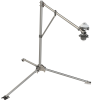

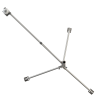
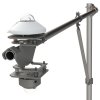
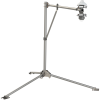
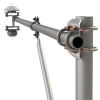

相关技术文档
常见问题解答
SOLAR1000: 6
展开全部收起全部
-
The CR1000 datalogger has built-in capabilities to be fully compatible with Modbus, as well as DNP3. The intention is to add additional compatible protocols as the industry and markets change and evolve.
-
The solar sensors should be cleaned daily—at the minimum, weekly. The required maintenance cycle varies based on location, precipitation, and biologic activity. Desiccant should be changed on a regular interval, but that interval depends on ambient environmental conditions.
-
The Solar1000 is both a station for resource assessment and power performance for photovoltaic power production facilities. For example, this system may be used to quantify the potential power that could be generated at a proposed site. During and after construction at a site, the station can be used to provide data that isolates system inefficiencies and provides crucial information to funding agencies.
-
Unless the panels are tracking either in one axis or two, it is not likely that a tracker and pyrheliometer are needed.
-
Yes. The Solar1000 has been designed to meet California ISO specifications.
-
No. The main concern when installing the system is to ensure that the stand is secure to the ground and that the sensors are aligned and leveled. With patience, these tasks can be performed fairly easily.